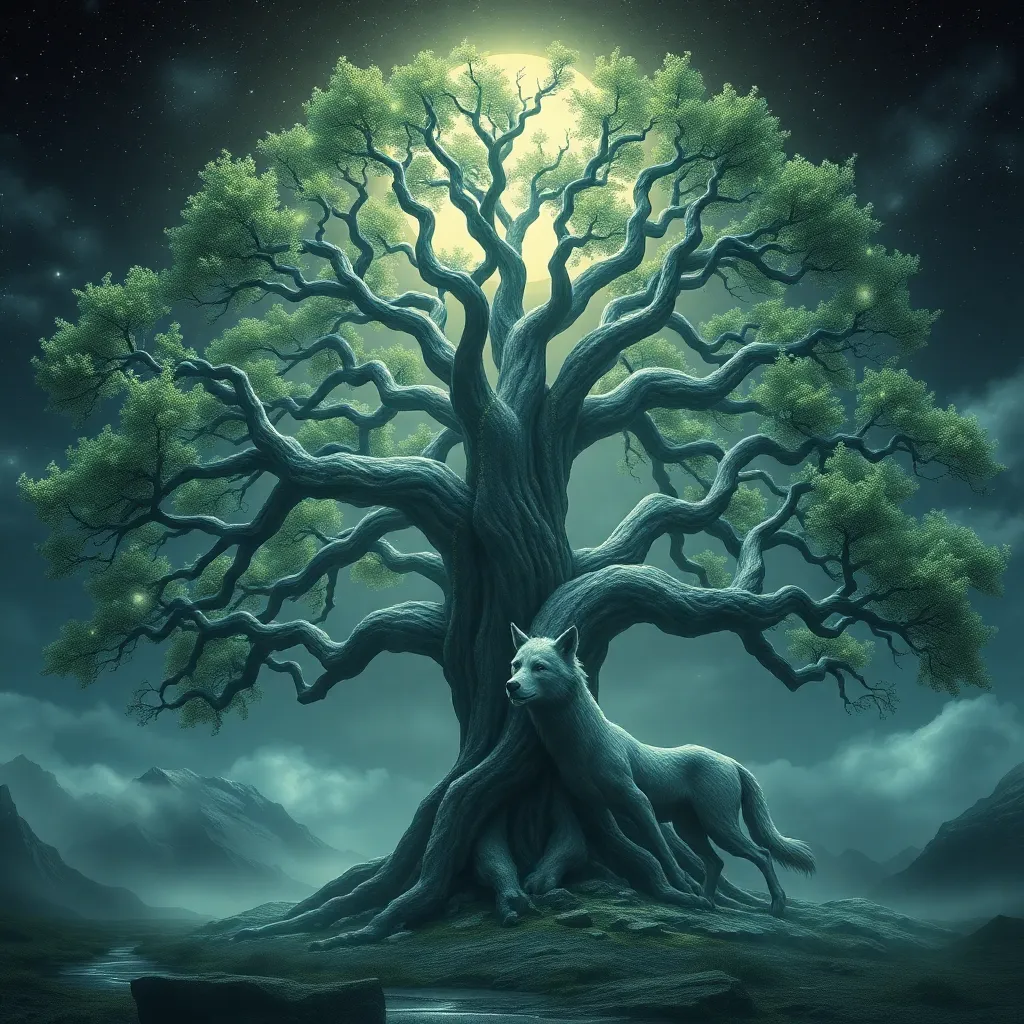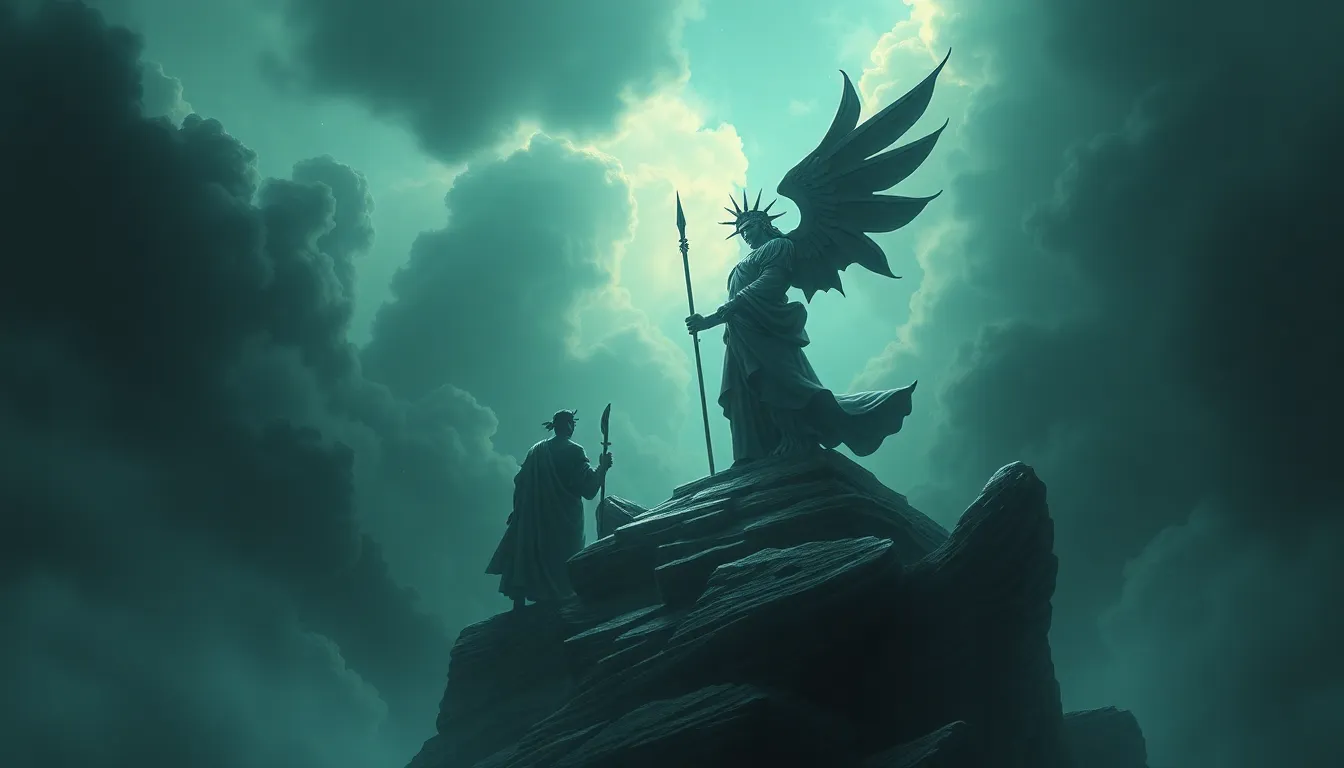The Mythical Tapestry: Weaving Transformations Through Time
I. Introduction to the Concept of the Mythical Tapestry
The concept of a mythical tapestry can be understood as a rich and intricate narrative woven through the threads of culture, history, and imagination. Each strand represents stories passed down through generations, embodying the values, beliefs, and experiences of a society.
Storytelling and mythology are fundamental components of human culture, serving as a means to convey wisdom, moral lessons, and the collective identity of a people. The importance of these narratives cannot be overstated, as they provide a framework for understanding the world and our place within it.
This article aims to explore the multifaceted nature of the mythical tapestry, delving into its historical context, symbolic significance, and contemporary interpretations. We will examine how these narratives have evolved and transformed over time, reflecting the dynamic nature of culture itself.
II. Historical Context: Tapestry as a Medium of Art and Storytelling
Tapestry weaving has a long and storied history, dating back to ancient civilizations such as the Egyptians, Greeks, and Romans. These cultures utilized tapestry not only as a decorative art form but also as a means of storytelling, often depicting historical events, mythological tales, and religious narratives.
Some notable examples of historical tapestries include:
- The Bayeux Tapestry, which chronicles the events leading up to the Norman Conquest of England.
- The Unicorn Tapestries, which symbolize purity and the quest for the unattainable.
- The Apocalypse Tapestries, depicting scenes from the Book of Revelation.
Tapestry has played a crucial role in preserving cultural heritage, serving as a visual record of societal values, historical events, and mythological tales that might otherwise be lost to time.
III. Symbolism in Tapestry: Weaving Themes of Transformation
Mythical tapestries often explore common themes such as heroism, fate, and the cyclical nature of life. These themes resonate deeply within cultures, offering insights into the human experience.
Colors and patterns in tapestry also carry significant symbolic weight. For example:
- Red may symbolize passion or sacrifice.
- Blue can represent tranquility or the divine.
- Geometric patterns might signify order and stability.
Case studies of specific tapestries illustrate these transformative narratives. The The Lady and the Unicorn series, for instance, explores the themes of desire and the senses, inviting viewers to contemplate the complexities of human experience.
IV. The Evolution of Tapestry Techniques Through Time
Traditional weaving methods have diverse cultural significance, often passed down through generations as a form of artistic expression. Techniques such as hand-weaving, knotting, and embroidery have evolved, reflecting the technological and cultural advances of their time.
Throughout history, tapestry weaving has seen innovations, including:
- The introduction of new materials, such as silk and synthetic fibers.
- Improvements in dyeing techniques, allowing for more vibrant colors.
- The adaptation of weaving techniques influenced by different cultures.
Today, modern technology has also impacted tapestry art, with digital design tools enabling artists to experiment with new forms and styles while still paying homage to traditional methods.
V. The Role of Mythology in Weaving Personal and Collective Identities
Myths have a profound influence on cultural identities, shaping how communities view themselves and their histories. Tapestry serves as a visual representation of these myths, often intertwining individual stories with the collective narrative.
Contemporary artists increasingly draw from mythology in their work, integrating personal experiences with broader cultural themes. This intersection creates a dialogue between the past and present, allowing for a re-examination of identity and tradition.
VI. Tapestry in Literature: Weaving Narratives in Written Form
The metaphor of weaving often appears in literature, symbolizing the interconnectedness of stories and lives. Authors employ the tapestry motif to illustrate complex narratives that reflect the intricacies of human experience.
Some literary works that incorporate the tapestry motif include:
- The Song of Achilles by Madeline Miller, which intertwines the myth of Achilles with themes of love and destiny.
- The Tenth Muse by Catherine Chung, exploring the intersection of personal and collective histories.
The influence of tapestry imagery on narrative structure can be seen in how authors weave together various plot threads, creating a rich and layered storytelling experience.
VII. Cultural Exchange: Tapestry as a Global Phenomenon
Tapestry traditions vary widely across cultures, each embodying unique techniques, styles, and narratives. The exchange of ideas and practices through trade and collaboration has enriched the art of tapestry.
Some notable examples of cross-cultural tapestry projects include:
- The collaboration between European and Asian artisans during the Silk Road era.
- Contemporary projects that bring together weavers from different cultural backgrounds to create shared narratives.
This cultural exchange highlights how tapestry serves as a global phenomenon, transcending boundaries and fostering mutual understanding through art.
VIII. Contemporary Interpretations of the Mythical Tapestry
Modern artists are reinterpreting mythical themes within the tapestry medium, often blending traditional techniques with contemporary concepts. This fusion creates a dynamic dialogue that resonates with today’s audiences.
The intersection of tapestry with other art forms, such as digital art and installation, further expands its relevance. Artists are exploring new ways to engage with the mythical tapestry, making it a vibrant part of contemporary discourse.
In today’s social and political climate, mythical tapestries also serve as a medium for commentary, addressing issues of identity, conflict, and resilience.
IX. The Future of Tapestry: Innovations and Sustainability
The future of tapestry art is bright, with new materials and techniques emerging to inspire artists. Innovations such as eco-friendly dyes and sustainable weaving practices are becoming more prevalent, reflecting a growing awareness of environmental issues.
As artists continue to push the boundaries of tapestry art, we can anticipate exciting developments that honor tradition while embracing the future. Predictions for the future of tapestry include:
- Increased use of technology in the design and production processes.
- A focus on sustainable practices and materials.
- A continued exploration of cultural narratives that resonate with contemporary audiences.
The mythical tapestry will undoubtedly continue to evolve, weaving together the threads of history, culture, and innovation for generations to come.




